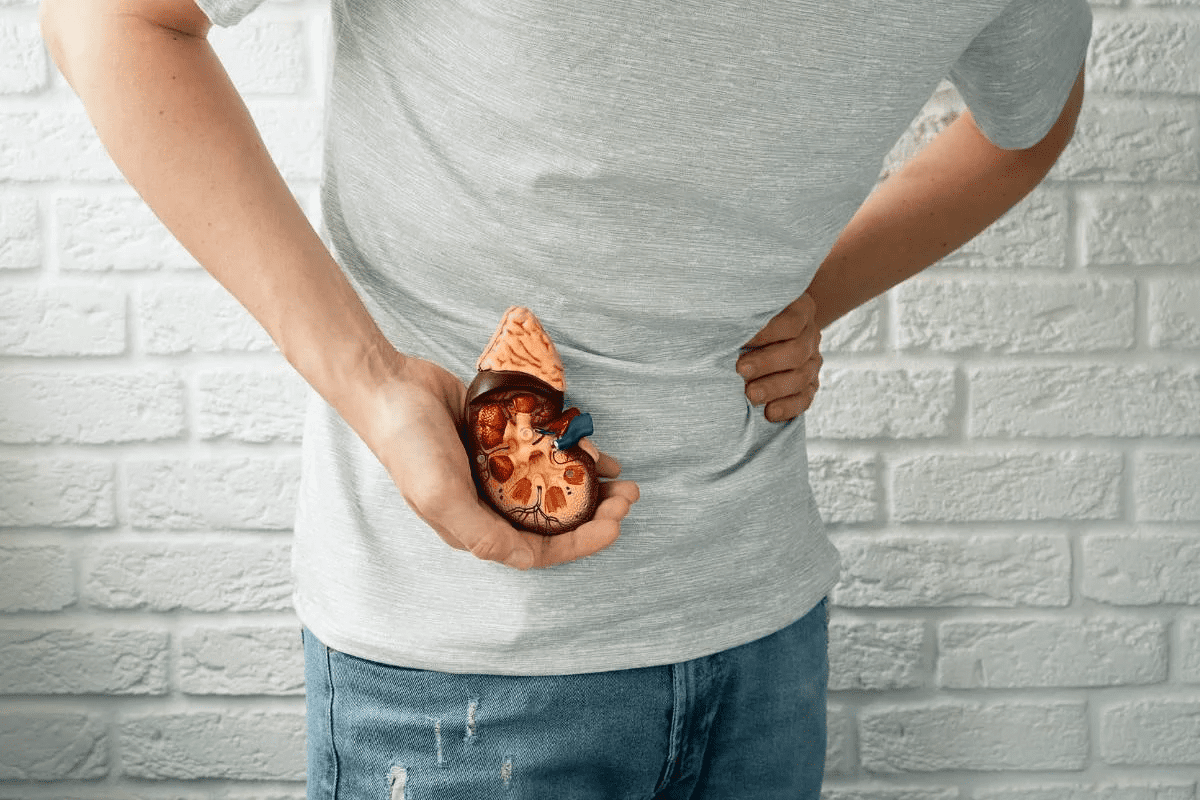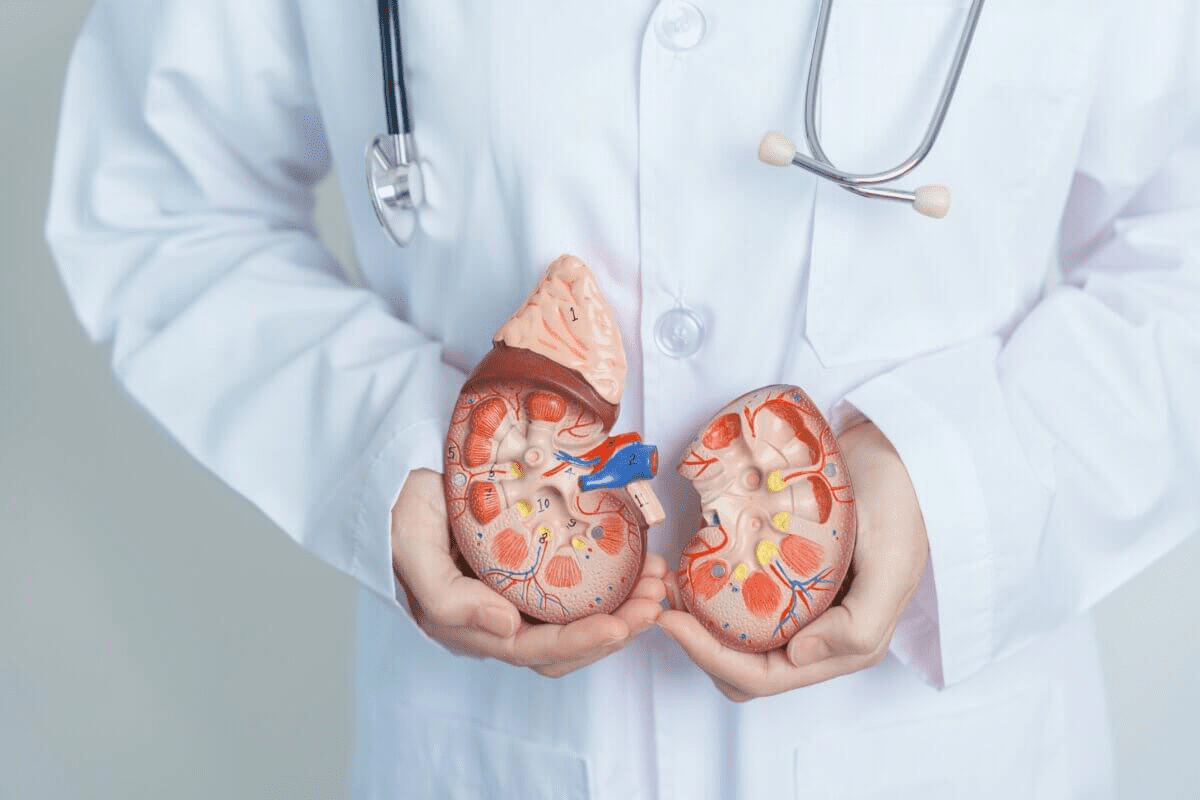
Urinary tract stones can be very painful and affect millions globally. Bladder stones and kidney stones are different problems that need unique treatments. Knowing the difference is key for those with urinary issues.
What’s the difference between bladder stones vs kidney stones? We explain the key distinctions in cause, symptoms, and treatment.
At Liv Hospital, our team is skilled in diagnosing and treating these issues. We know how important it is to understand the differences. This helps patients with urinary discomfort find the right help.
Both types involve hard mineral deposits in the urinary system. But they happen in different places and have different causes and symptoms. This article will dive into the differences between bladder and kidney stones. We’ll look at their causes, symptoms, and how to treat them.

Urinary tract stones are a common health issue that affects millions of people worldwide. They are formed when minerals in the urine crystallize and stick together. This can happen in the kidneys, bladder, or ureters.
Symptoms of urinary tract stones include severe pain, frequent urination, and blood in the urine. These symptoms can vary depending on the location and size of the stone.
Treatment options for urinary tract stones include medications to help pass the stone, shockwave therapy, and surgery. The choice of treatment depends on the size and location of the stone, as well as the individual’s overall health.
Preventing urinary tract stones is key to managing this condition. Drinking plenty of water, avoiding foods high in oxalate, and maintaining a healthy weight can help prevent stone formation. It’s also important to manage conditions like diabetes and high blood pressure, as they can increase the risk of developing stones.
Bladder stones and kidney stones are both urinary stones that can cause a lot of pain. It’s important to know the differences to get the right treatment.
Bladder stones form in the bladder, often due to urinary retention or infection. Kidney stones, on the other hand, form in the kidneys. They can be caused by dehydration, diet, or genetics.
Bladder stones can cause painful urination and frequent trips to the bathroom. Kidney stones lead to severe pain in the side or back. Doctors use ultrasound or CT scans to diagnose both.
Treatment varies based on the stone’s size and location. Small stones might pass with more water. But bigger stones might need lithotripsy or surgery.

Kidney stones are a common health issue that affects millions of people worldwide. The risk factors for developing kidney stones are multifaceted. They include dehydration, dietary factors, and certain medical conditions.
Dehydration is a significant risk factor for kidney stones. When the body loses more fluids than it takes in, the concentration of minerals in the urine increases. This can lead to the formation of stones. Drinking enough water is essential to prevent dehydration.
A diet high in animal protein, sodium, and sugar can increase the risk of developing kidney stones. Foods that are high in oxalate, such as spinach and beets, can contribute to the formation of certain types of kidney stones.
Certain medical conditions, such as hyperparathyroidism and gout, can increase the risk of developing kidney stones. Some medications, like diuretics, can also contribute to the formation of kidney stones.
A sedentary lifestyle can also increase the risk of developing kidney stones. Regular physical activity and a balanced diet can help reduce this risk.
In conclusion, understanding the risk factors for kidney stones is key for prevention and management. By staying hydrated, maintaining a balanced diet, and being aware of certain medical conditions, individuals can reduce their risk of developing kidney stones.
Bladder stones are hard masses of minerals that form in the bladder. They can develop due to several factors. These include urinary retention, neurogenic bladder, and dehydration. Knowing these causes and risk factors is key to preventing and treating bladder stones.
Urinary retention, often caused by an enlarged prostate or neurogenic bladder, can lead to the formation of bladder stones. Dehydration makes urine more concentrated, raising the risk of stone formation. Certain medical conditions, such as kidney disease or gout, can also increase the risk of developing bladder stones.
Symptoms of bladder stones can include severe pain while urinating, frequent urination, and abdominal pain. Diagnosis is typically made through imaging tests such as ultrasound or CT scans.
Preventing bladder stones involves staying hydrated, managing underlying medical conditions, and making dietary changes. Treatment options vary depending on the size and location of the stones. They may include watchful waiting, medication, or surgical removal.
By understanding the causes and risk factors of bladder stones, individuals can take steps to prevent their formation. They should also seek appropriate medical care if symptoms arise.
Bladder stones and kidney stones are two different issues that affect the urinary system. Bladder stones can lead to pain when you pee, needing to pee a lot, and blood in your urine. Kidney stones, on the other hand, cause sharp pain that might spread to your back or side.
The signs of bladder stones and kidney stones can seem alike at first. But, bladder stones usually hurt more in the pelvic area. Kidney stones, by contrast, can cause pain that moves to your back or side.
It’s important to know how these two conditions differ. This knowledge helps doctors diagnose and treat them correctly. By understanding the symptoms of each, healthcare teams can offer better care and management.
Diagnosing bladder and kidney stones requires a detailed process. It starts with a thorough medical history and physical examination. Then, imaging technologies like CT scans and ultrasound are used.
Treating bladder stones and kidney stones requires a variety of methods. For small stones, doctors might just use pain relief and plenty of water. But bigger stones might need surgery to remove them.
The main aim is to ease the pain and stop any serious problems. A doctor will look at your situation and suggest the best treatment for you.
To prevent urinary stones, it’s important to stay hydrated. Drinking enough water helps flush out minerals that can form stones. Aim for at least 8 cups of water a day.
Changing your diet can also help. Eating foods low in oxalate, such as spinach and beets, can reduce the risk of stone formation. Avoiding foods high in salt and animal proteins is also beneficial.
Some medications can increase the risk of urinary stones. If you’re taking certain medications, talk to your doctor about alternatives. They can help find safer options for you.
Regular check-ups with your doctor are key. They can monitor your urine and blood levels to catch any issues early. This helps prevent stones from forming.
By following these prevention strategies, you can lower your risk of urinary stones. Staying hydrated, eating a balanced diet, and managing medications are all important steps. Regular doctor visits also play a big role in keeping your urinary system healthy.
By living a healthy lifestyle and knowing the risks, you can lower your chance of getting bladder and kidney stones. Being informed and taking action early can prevent these issues. It also helps keep you healthy and feeling good.
Bladder stones form in the bladder, while kidney stones form in the kidneys. Both are hard mineral deposits, but they occur in different parts of the urinary tract.
Kidney stones can be caused by dehydration, a diet high in animal protein, sodium, and sugar, and certain medical conditions such as hyperparathyroidism.
Diagnosis may include imaging tests such as CT scans, ultrasounds, and X-rays. Doctors may also conduct urine analysis and review the patient’s medical history to confirm the presence of stones and identify underlying causes.
Common symptoms include severe pain, difficulty urinating, and blood in the urine. These symptoms can vary in intensity depending on the size and location of the stones.
Preventive measures include drinking plenty of water, maintaining a healthy diet, and managing any underlying medical conditions that may increase the risk of stone formation.
Treatment depends on the size of the stone and the severity of symptoms. Conservative management includes increasing fluid intake and managing medical conditions. Medication may be used to relieve pain and prevent infections. Surgery is usually required for large stones or when symptoms are severe.
In some cases, lifestyle changes can be sufficient. Increasing fluid intake, modifying the diet, and managing health conditions can help prevent the formation of stones and reduce symptoms.
Medical attention should be sought immediately if you experience severe pain, difficulty urinating, or other concerning symptoms, as timely treatment can prevent complications.
National Health Service (NHS). (2025). Whats the Difference Between Bladder Stones and Kidney. Retrieved from https://www.nhs.uk/conditions/bladder-stones/
Subscribe to our e-newsletter to stay informed about the latest innovations in the world of health and exclusive offers!
WhatsApp us